From the moment I walked into Turner Elementary in D.C. Public Schools, it felt like a dynamic and uplifting place to learn. So when Rhonda Ferguson, the teacher I’d come to spend the day with, spoke about the positive influence of LEAP—DCPS’ new teacher development program—I was impressed, though not terribly surprised.
To step back a bit, LEAP was created by the district and is the nation’s first Common Core-aligned adult learning curriculum. We’re particularly interested in the program because it aligns to some of what we learned about teacher development in The Mirage—that customization, clear and consistent feedback, and innovative thinking about what the teaching job could look like might all be steps in the right direction when it comes to helping teachers improve. The main components of the LEAP program are weekly 90-minute group seminars, in-class observations, and one-on-one mentoring, all run by LEAP Leaders. At some schools, these Leaders are teachers who spend part of their time running LEAP seminars and part of their time in the classroom, while in Rhonda’s case, the LEAP Leader is a former teacher who now works on LEAP full-time.
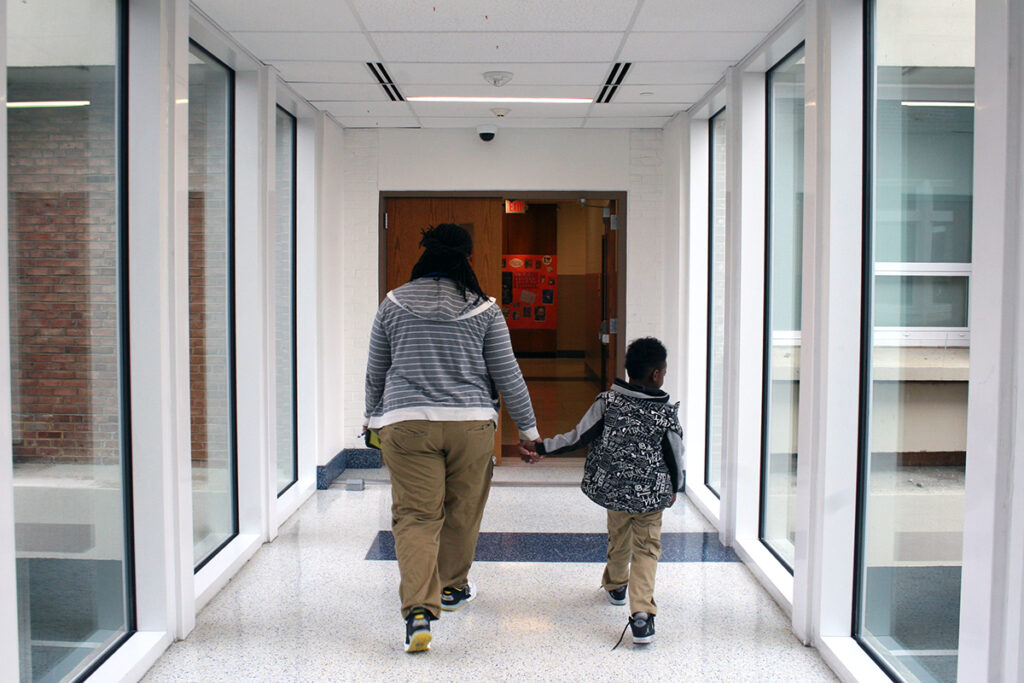
At Turner, in addition to teaching pre-K, Rhonda is tasked with building and implementing a cohesive set of practices around things like language, discipline, and school spirit.
Though I was at Turner to follow Rhonda and learn about LEAP, sitting in the front office, I couldn’t help but observe the school’s culture. I noticed several administrators chatting with students as they read their morning emails, asking the kids about their homework, and checking in about how things were at home. As I learned throughout the day, this scene was a good example of the way things work at Turner: teachers and school leaders are remarkably nimble—the phrase “this isn’t my job” doesn’t exist here. Instead, staff are given the opportunity to play to their strengths and contribute in whatever way suits them.
This school culture isn’t an accident: In fact, Rhonda is known as Turner’s “School Culture Lead.” Though school climate isn’t a standard part of LEAP at other schools across DCPS, it is a role that Rhonda’s principal, Eric Bethel, modeled after LEAP when he saw how well the initiative was supporting teachers in academic subjects like math and English. At Turner, Rhonda is tasked with building and implementing a cohesive set of practices around things like language, discipline, and school spirit. She spends part of her day in the classroom with her four and five years old, and part of her day coaching peers.
Rhonda explained that she and Mr. Bethel were inspired by the LEAP structure, and wanted to see what would happen if they applied its principles of one-on-one feedback, observation, coaching, and group seminars to aspects of their school beyond core subjects. For Rhonda, it also means she gets to see both sides of the teacher development coin: she coaches her peers, and she receives coaching herself.
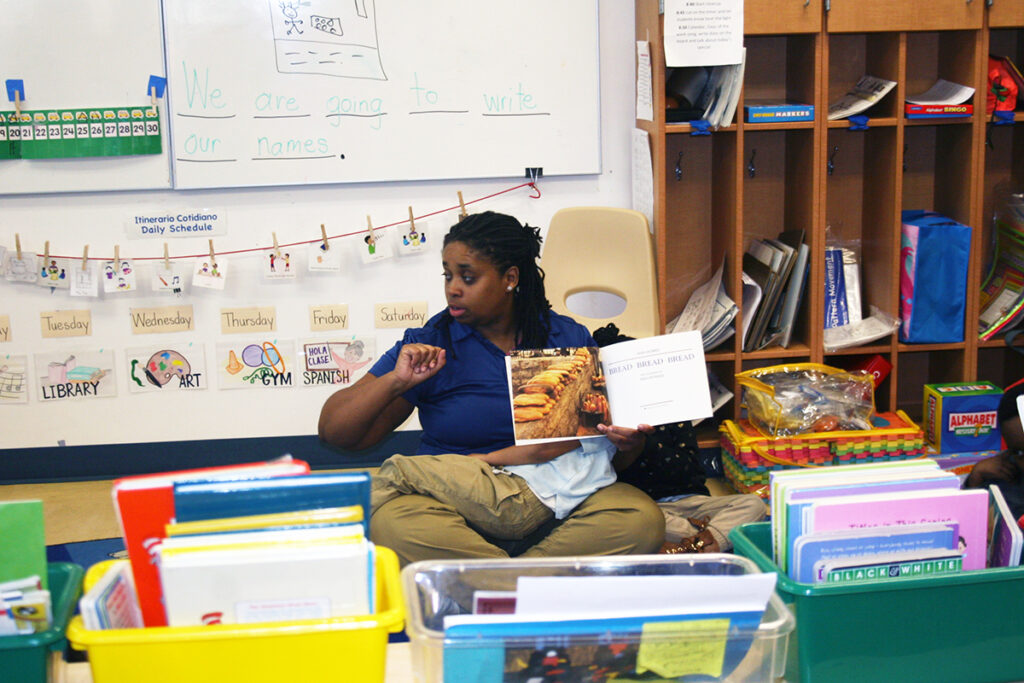
After a short yoga exercise with her students, Rhonda gathered the class for story time.
8:00 AM: Classroom Time
Rhonda and I left the front office and headed down the hallway to her classroom. On the way, we stopped to meet Mr. Johnson, the Coordinator of School Culture Strategy and Behavior Intervention, a role similar to Dean of Students. Mr. Johnson works closely with staff, particularly behavior techs (a role formerly known as hall monitor) to customise behavioral support for specific students and classrooms.
Rhonda told me that she works with Mr. Johnson on a “crisis management task force,” a group of Turner teachers and school leaders focused on creating a unified approach to handling emergencies in the classroom. “The goal is to de-escalate the situation with as little disruption as possible, and get the student back to class so they can continue learning,” Rhonda said. “Trauma Informed Care and Conscious Discipline define a lot of what we do.”
We got to her classroom, and after a short yoga exercise with her students, Rhonda gathered the class for story time. But it was pretty different from the story times I had as a kid. When one of Rhonda’s students noticed the characters in the book were making pizza, just like the characters in another book, Rhonda asked her to grab both books and talk to the class about what she found, encouraging her to draw connections between two texts, even at age five.
During the lesson, a few older students wandered into the classroom and sat quietly behind Rhonda’s desk in the corner. She told me this was something she was trying as Culture Lead; opening her room up as a “cool down space” for older kids who were having trouble focusing in their own classrooms.
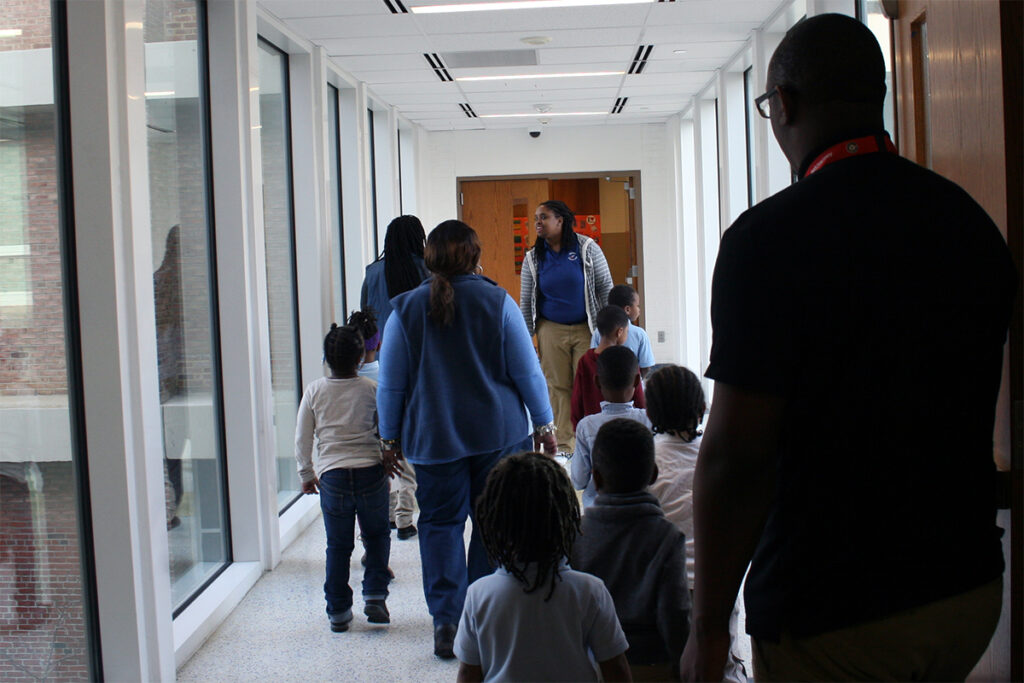
Rhonda dropped the kids off at the library, giving her time to do an observation in Ms. Jones-Owens’ first-grade classroom.
9:00 AM: Culture Observations
After story time, Rhonda dropped the kids off at the library, giving her time to do an observation in Ms. Jones-Owens' first-grade classroom. Rhonda sat with a pair of students who weren’t getting along because, though they were meant to work on a project as partners, one had finished his task before the other. “Is Rakeem bored?” Rhonda scribbled onto a yellow sticky pad. She told me that she’d later use the notes in mentoring sessions with teachers, as well as in the larger culture meetings with the whole staff.
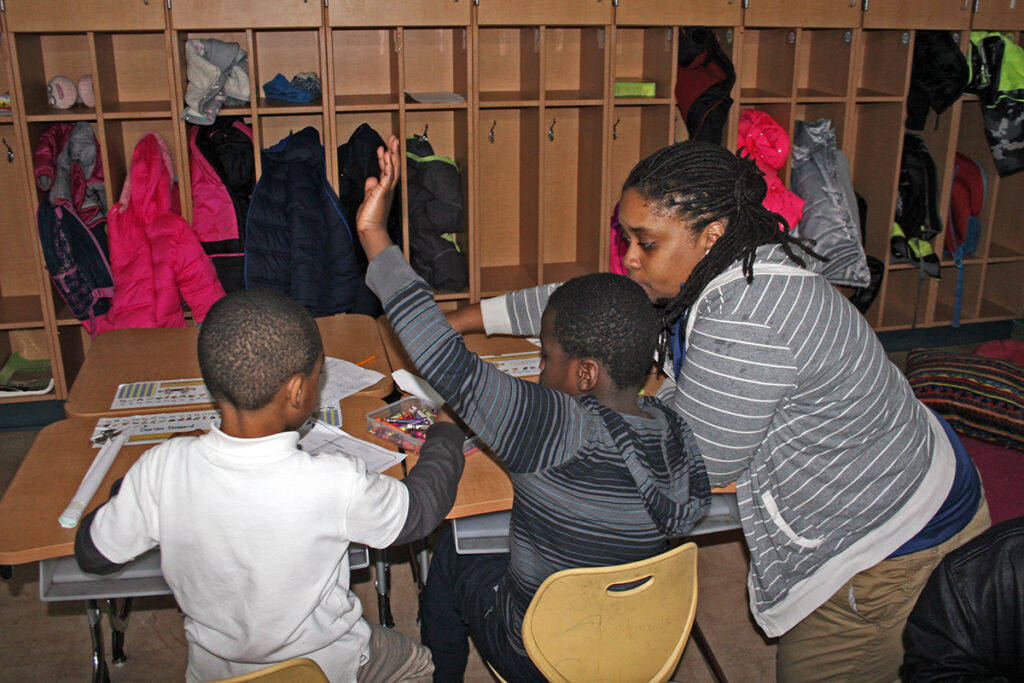
Rhonda moved seamlessly between teaching in her own classroom and doing culture check-ins with teachers.
As the day went on, Rhonda moved seamlessly between teaching in her own classroom and doing culture check-ins with teachers. Then, the tables turned. Rhonda has the opportunity to both coach and be coached—and at nap time, it was her turn to get feedback on her own teaching.
1:00 PM: Rhonda’s LEAP Mentoring Meeting
While her students got some shut-eye, Rhonda had a mentoring session with Brittany Casper, Turner’s ECE LEAP Lead. Together, they discussed what Brittany observed in Rhonda’s class that week. Much of their conversation centered around Rhonda’s recent classroom reorganization, which was meant to help create a space where her own students could relax and regroup as they develop self-regulation skills that also prevents the older kids who come in to “cool down” from distracting her students.
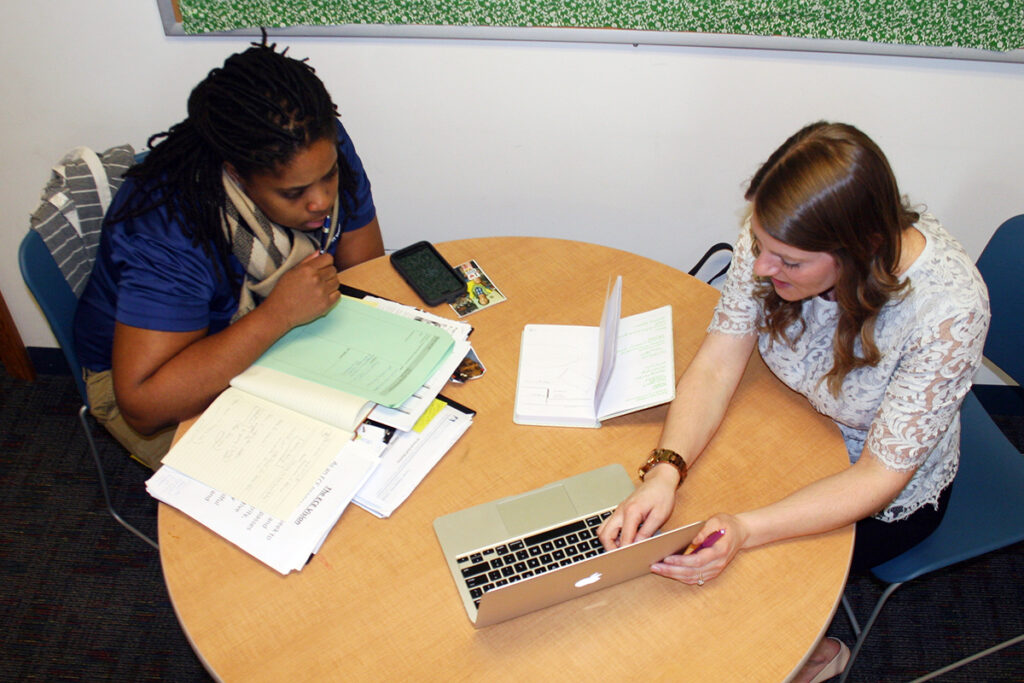
“I get a lot of great feedback, and I get it at least once a week,” Rhonda said of her work with Brittany.
“I get a lot of great feedback, and I get it at least once a week,” Rhonda said of this work with Brittany. “It's quick things that I can implement right away, then test, see if it works, and move forward.” Another benefit of these regular opportunities for feedback is that Rhonda is better able to gauge her performance, one of the few factors that seemed to matter for teacher improvement based on our research.
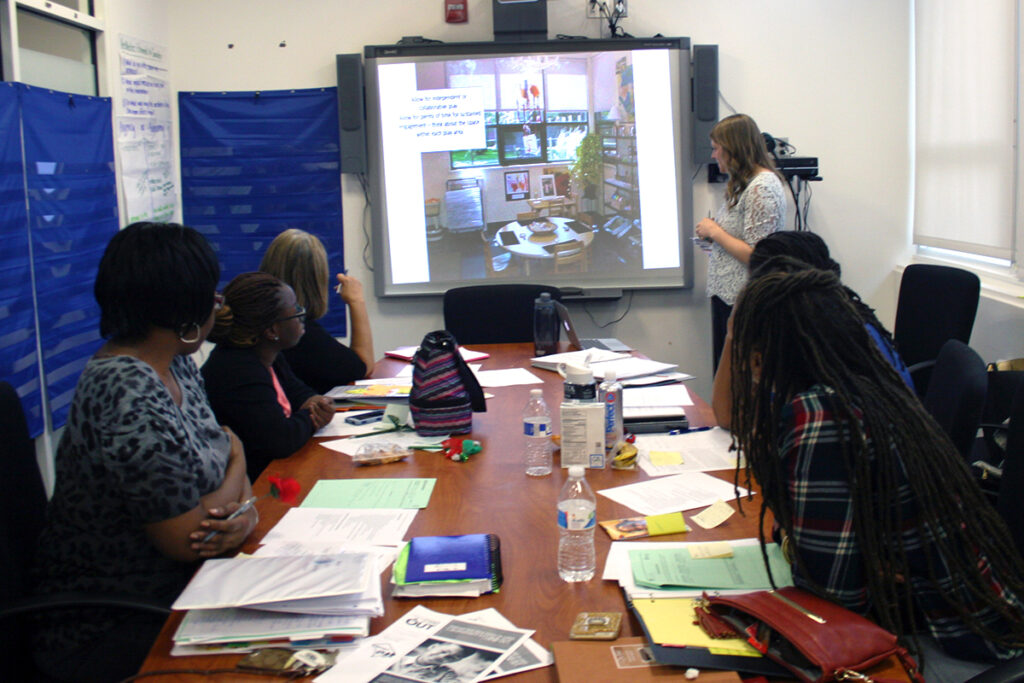
“Trainings used to be pretty general. I’d be in a room with hundreds of other teachers, and the content wasn’t really differentiated to meet my specific needs, so it wasn’t always helpful. With LEAP, we’re able to learn things that work in our classrooms.”
1:30 PM: ECE Team LEAP Professional Development Session
After the one-on-one meeting, we headed to the LEAP group seminar, where every week, Brittany meets with all six of Turner’s ECE teachers and goes through the LEAP curriculum—a program that is shared with ECE teachers all over DCPS. The subject of the module was “Oral Language and Early Literacy Development,” and they began the seminar by discussing a paper, “The Universal Design of Early Education,” about designing classrooms to be accessible to students of diverse abilities. But it wasn’t just about sharing best practices; teachers critiqued what they read, and made concrete plans to implement the things they liked in their classrooms. Next, a teacher, Mrs. Watson, shared student work from her classroom. And because the team knows Mrs. Watson and her students, they were able to share specific advice on how to tailor lessons to particular kids’ needs.
When I asked Rhonda how these LEAP seminars compared to past professional development courses, she said, “Trainings used to be pretty general. I’d be in a room with hundreds of other teachers, and the content wasn’t really differentiated to meet my specific needs, so it wasn’t always helpful. With LEAP, we're able to learn things that work in our classrooms.”
[subscribe]
3:30 PM: School Culture Professional Development Session
We ended the day in a school-wide teacher professional development session, which Rhonda led. She walked the teachers through discussing specific challenges in their classrooms around issues like bullying, attendance, and crisis management, and workshopping them as a group—not unlike the exercise Brittany facilitated in the LEAP session.
The meeting ended with a short story from Mr. Bethel about a student I’ll call Tyrone.
“We all remember what Tyrone was like last year.” Several teachers nodded, while a few others shook their heads and grinned as if to say, “You bet I remember!”
Mr. Bethel continued, “Yeah, he’d be everywhere but the classroom, if he even showed up to school at all. But then we got the parents involved; we were able to get him the diagnosis he needed, and a social worker. So now, we’re still talking to the parents and still working to get Tyrone everything he needs, but he comes to school every day, and stays in class.” The teachers applauded. “And I say ‘we’ because it really took all of us working together to make that happen.” The applause grew louder.
As Rhonda and I walked back to her classroom, ending our day, she gave me some context for Mr. Bethel’s story. “We’re aware there are students who need more than they’re getting,” she said. “But that’s not all we pay attention to. Every day there is an effort to emphasize transparency around making gains, around being successful. It takes a village, a team effort, to bring about the success for our students. We have lots of stories like that, and we’re about getting every one of our kids a success story of their own.”
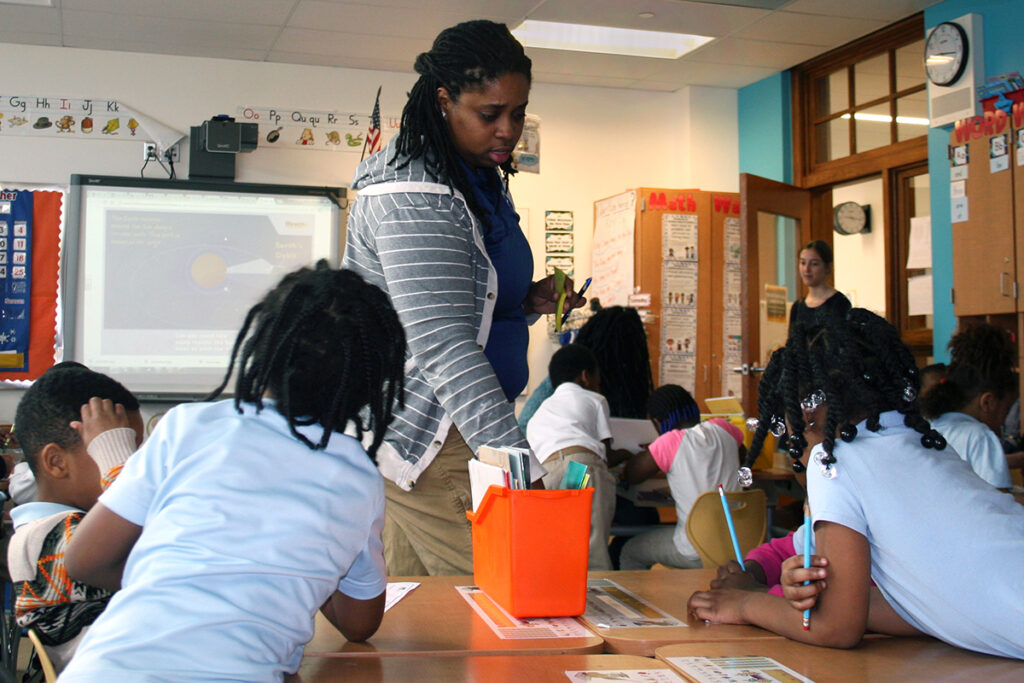
“It takes a village, a team effort to bring about the success for our students. We have lots of stories like that, and we’re about getting every one of our kids a success story of their own.”




